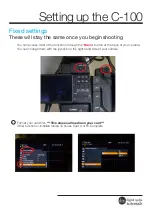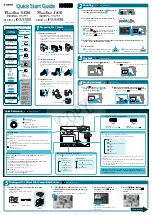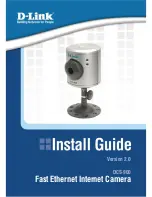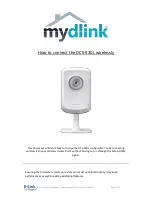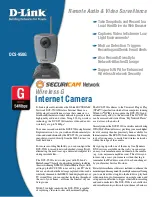
VCSBC64XX_HW.pdf – Hardware Documentation VCSBC64XX Smart Cameras
28
6.2 Ethernet
Communication
The default camera IP address is 192.168.0.65 – as with all Ethernet cameras from VC.
The IP address can be changed to a different loading a #IP file into camera memory.
Refer to the “Getting Started VC Smart Cameras” guide for further details.
The camera supports DHCP server IP address allocation. In order to use DHCP allocation, the entry
“DHCP” needs to be added to the #IP file as shown:
DHCP
IP: 192.168.0.81
MSK: 255.255.255.0
GTW: 192.168.0.1
The camera uses the specified IP address if DHCP allocation is not successful. If no IP address is
specified in the #IP file, the camera falls back to the default address:
192.168.0.65
Please use DHCP server functions to determine the IP address allocated to the camera. Most
server show a list of mac addresses and corresponding IP addresses or allow to allocate fixed
IP addresses to a certain mac address. Determine the mac address of the camera using the
shell command “type #ID” to prior to using DHCP IP address allocation!
The “Getting Started VC Smart Cameras” and section 6.4.1 include advice on re-setting a camera with
unknown or invalid IP Address.
6.3 Using FTP with the VCSBC64XX
The use of any standard ftp client is now possible. The following server commands have been added:
SYSTEM,PWD,CWD,LIST,DEL
Programs have to be uploaded as “out” files into the camera flash memory. Ascii files like the
autoexec or #IP files can be uploaded as “*.txt” files – the conversion into *.msf” files is not required.
6.4 Preventing Autoexec Execution / IP number reset
Preventing the execution of an Autoexec file by attempting a connection with the camera (as
described in the programming tutorial) does not work, due to the increased processor speed.
Resetting the camera using a keypad as with the VC20XX cameras is also not possible.
There are three ways of preventing the Autoexec execution and resetting the IP address:
Option 1:
1. Upload an empty autoexec/ #IP file via FTP into the camera memory, overwriting the existing
file(s).
2. Hardware reset of camera.
Option 2:
CPU reset with help of an Emulator.
Option 3:
Resetting the camera with help of the “VCnet Recovery Tool” as described in the following
section.
©
1996-2011 Vision Components GmbH Ettlingen, Germany



























